The Nikon D50 vs modern mirrorless offers a surprising comparison. With the resurgence of CCD-based digital cameras in recent years, I wanted to see how my newly acquired Nikon D50 holds up against a modern mirrorless system. Sure, technology has advanced dramatically since 2005, but there’s something about older cameras that still carries an undeniable charm.
How I Found My New Retro Nikon D50
Some camera purchases are driven by specs, others by necessity—but this one was pure nostalgia. Leaving the office on a warm summer evening, I spotted a second-hand Nikon D50 in a camera shop window. Complete with two batteries and a Nikon AF-S 18-55mm lens, it was selling for just $99 AUD. I couldn’t resist.
This was the same model I had bought for myself nearly 20 years ago, back when I worked at a camera shop during high school and university. My original Nikon D50 was stolen in late 2006, setting me on a path through a series of cameras—Canon EOS 400D, Nikon D810, and eventually, a move into Leica. But something about seeing that familiar body in the shop window pulled me back. With the recent Digicam revival, I wondered—how does the Nikon D50 hold up today?
I took my Nikon D50 out for a shoot and compared it to a high-end mirrorless system. Why not download some RWA files of the Nikon D50 to try for yourself.
Bringing my Nikon D50 home, I hit my first roadblock—modern SD cards won’t work. This DSLR was from a transitional period before SD-HC, meaning it could only handle cards up to 2GB. After digging through my drawers, I found an old 2GB SD card and powered it up. The camera felt surprisingly good in my hands. The build quality, while polycarbonate, was sturdy, and the control layout was simple yet functional.
There is no doubt camera and general LCD screen technology has improved in resolution, color and size since 2005.
The Nikon D50 in 2024 – Can It Still Take Great Photos?
Curious about its performance, I took the Nikon D50 on a bike ride. Shooting in RAW (NEF format), I experimented with underexposure and overexposure to test its limits. To my surprise, the CCD sensor’s color rendition was stunning. Modern CMOS sensors are sharper and cleaner, but CCD sensors have a unique character—richer colors, a softer highlight roll-off, and a nostalgic film-like quality that’s hard to replicate.
The D50’s specs might seem laughable by today’s standards:
- 6.1MP CCD sensor (huge for 2005, now equivalent to 4K video resolution)
- ISO 200-1600 (no low ISO options, a real throwback!)
- 2.5 FPS burst mode (compared to today’s 20+ FPS, it feels slow, but it makes you think about your shots)
- Five autofocus points (versus the hundreds found in mirrorless cameras)
- Shutter speed up to 1/4000s
I can’t deny it. The retro DSLR mirror and shutter sound is awesome!
But in practice? The images were fantastic—a unique mix of digital crispness and film-like character. Sure, my Fuji X-H2 is my workhorse for stills and 8K video, but the Nikon D50 made me slow down and enjoy photography in a way I hadn’t in years.


1. RAW File Recovery – Stronger Than Expected
One of the biggest surprises with the Nikon D50 was its ability to recover details from underexposed and overexposed RAW files. Despite being nearly 20 years old, the 6.1MP CCD sensor still holds up remarkably well when editing in Lightroom or Photoshop.
The recoverability is great! What I saw bringing up the shadows here and retaining detail is really something else, and it holds up by modern standards.


- Highlights: The D50 does an excellent job of retaining highlight details, allowing for smooth roll-off even when overexposed.
- Shadows: Shadow recovery is also impressive, with the NEF (RAW) files maintaining a surprising amount of detail even in deep blacks.
- Dynamic Range: While it doesn’t compare to modern full-frame sensors, the D50’s files are still very workable, especially when shot at lower ISOs.
This was a reminder of how well Nikon’s sensor technology aged—even back in 2005, they built something capable of capturing great tonal range.
2. Color Science – The CCD Magic
If there’s one thing that truly makes the Nikon D50 special, it’s the color science of its CCD sensor. Modern CMOS sensors have come a long way in terms of sharpness, noise performance, and efficiency, but there’s a unique richness to the D50’s colors that modern cameras just don’t replicate. Read up more on the Digicam craze.
- Warm, natural tones: Skin tones, in particular, look fantastic straight out of the camera, with a lifelike warmth that avoids the artificial look of over-processed colors.
- Deep blues and greens: Outdoor shots have a richness to them that is hard to replicate with newer cameras. The way CCD sensors handle color is a big reason why many photographers are rediscovering these old digital cameras.
- Smooth highlight roll-off: Modern sensors prioritize absolute sharpness and detail, but the D50’s images feel more organic, with softer transitions between highlights and midtones.
This is one of those subjective areas in photography where specs and numbers don’t tell the whole story. Shooting with a Nikon D50 is a different experience—it feels different, and the images have a nostalgic quality that modern CMOS sensors just don’t match.
3. Lens Compatibility – A Hidden Strength
Unlike later entry-level Nikon DSLRs, the Nikon D50 has an internal autofocus motor, which is a massive advantage for anyone wanting to use older Nikkor lenses.
Is the camera capable of ultra sharp images with the standard Nikon AF-S 18-55mm lens? Yes, see for yourself with these tests.


- AF and AF-D lens support: The D50 can autofocus with older screw-drive lenses, something that later Nikon models like the D40, D60, and D3000 series lack.
- Expanding lens options: This means you can use budget-friendly vintage Nikkor lenses, many of which are optically superb but far cheaper than modern AF-S lenses.
- Great compatibility with classic Nikon glass: Lenses like the Nikon 50mm f/1.8D or the 85mm f/1.8D autofocus beautifully on the D50, while newer entry-level Nikons would require manual focus.
There is some chromatic abberation to be found on the Nikon 18-55mm, though not as much as I remember Canon lenses of the same era having.

For anyone who enjoys adapting older glass, this feature alone makes the D50 a better buy than some later entry-level Nikon models.
4. Low-Light Performance – A Mixed Bag
One of the areas where the Nikon D50 really shows its age is in low-light shooting. With a native ISO range of just 200 to 1600, it lacks the extreme low-light capabilities of modern cameras.
- ISO 1600 is the max: Unlike today’s cameras that shoot clean images at ISO 6400 or higher, the D50 struggles in dim environments.
- Visible noise: Images at ISO 1600 have noticeable grain, though the noise pattern is more organic compared to modern digital noise.
- Requires more skill: Shooting in low light with the D50 forces you to think more about exposure—using a tripod, slower shutter speeds, or external lighting to compensate.
That said, the challenge is part of the fun. Unlike today’s cameras, which can practically see in the dark, the D50 makes you work for good low-light shots. And when you nail them, they have a distinct film-like charm.
Why The Nikon D50 is Special: The CCD Sensor Revival
In the era of AI-enhanced smartphone cameras and hyper-sharp mirrorless systems, the photography world is seeing an unexpected resurgence—the return of early 2000s digital cameras, specifically those with CCD sensors.
Photographers and content creators are rediscovering the charm of cameras like the Nikon D50, Canon PowerShot G-series, and Sony Cyber-shots. The CCD sensors offer:
- Rich, natural color tones that feel different from modern CMOS sensors.
- Dreamy, vintage-style aesthetics reminiscent of MySpace-era photography.
- A slower, more deliberate shooting experience that makes you appreciate composition and light.
As a result, second-hand prices for CCD cameras are climbing fast on eBay. If you’re looking for a fresh creative tool, now might be the time to dig up an old digicam before they become even more expensive.
The Nostalgic Joy of Shooting with the Nikon D50
Shooting with the Nikon D50 feels like rediscovering photography. Unlike modern cameras with endless settings and AI-enhanced everything, the D50 brings things back to basics. It forces you to be intentional—choosing the right exposure, composing carefully, and working within the camera’s limitations to create great shots.
Yes, newer cameras are better in every technical way. But better doesn’t always mean more fun.
Unfortunately, my Nikon D50 has some sensor dust. But that’s easily cleaned.

Is the Nikon D50 Still Worth Using?
Absolutely. While modern mirrorless cameras outclass the Nikon D50 in almost every technical way, that’s not the full story. The color science, lens compatibility, and shooting experience of the D50 make it a genuinely enjoyable camera even today.
Loving those early 2000s CCD style skin tones with the harsh built in popup flash.

If you can find a good deal on one, it’s an excellent choice for photographers who want to experiment with CCD colors, use classic Nikon lenses, or simply slow down and appreciate the process of photography.
For me, revisiting the Nikon D50 was more than just nostalgia—it was a reminder of why I fell in love with photography in the first place.
Would you use a Nikon D50 in 2024? Let me know in the comments!




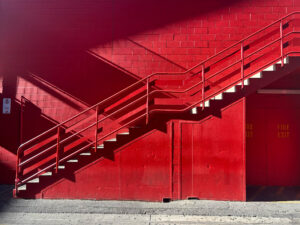





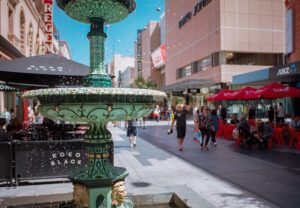








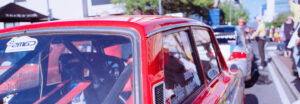
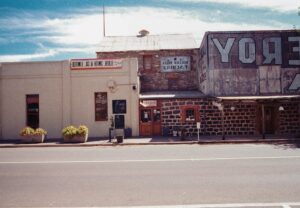















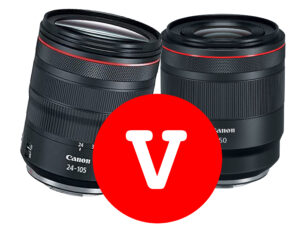

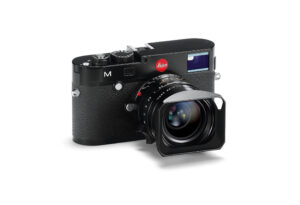





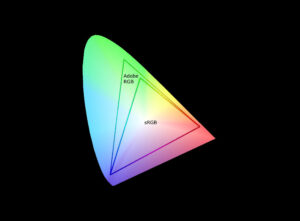











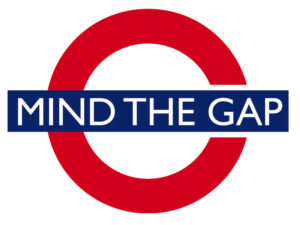















4 Responses
i have a D50 right now too! D40 was my first, something happened, and now i have this D50 for free from someone in California! absolutely loving it, and i have a page full of my shots with it. can’t believe that its older than me.
The D50 is my favorite camera for doggie photography in my local park.
It has several very favorable criteria:
1. Flash sync 1/500 sec due to hybrid electronic shutter – to freeze dog motion and fill in shadows on their bodies and faces on sunny days
2. Very long battery life, hundreds of shots per charge over a month or more without recharging
3. Relatively inexpensive, so if I get knocked over by the dogs and it breaks, I won’t be terribly upset.
4. Very comfortable to hold and operate, especially for a person with large hands.
The 2-in screen is sufficient for checking exposure and framing. Allows pleasant surprises when viewing on a full size computer monitor.
It’s actually hard to take a bad picture in good light with this camera.
I was able to get several bodies in nice shape for $20 to $50 USD each.
The only model generally available in the US is the black model. I recently did acquire a silver model from MPB with a UK serial number, which I think looks more interesting than the black.
I do still very happy to enjoy my D50. Have some lasting travel photos and still use it for family and group group.
That is great to hear! It is a very reliable, great all round digital SLR.